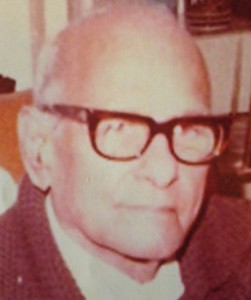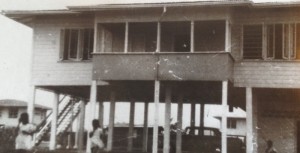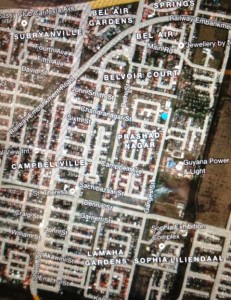
It was a wide, flat and abandoned rice field when, in the late 1950s, real estate developer Hari Prashad purchased just over 76 acres put up for sale by then British Guiana conglomerate Bookers, in an area called Bel Air, which was then mainly rice fields owned by Bel Air Estates Ltd.
The land, known then as “area H”, was bordered by Bel Voir Court to the north; a reserve between the land and Campbelville to the west, by Sophia to the east, and Cummings Canal to the south. It has since become known as one of the country’s oldest premier housing schemes: Prashad Nagar.
Hari Prashad decided to turn the former rice land into a housing estate which he named Prashad Nagar; Prashad, his family name, and ‘Nagar’, a Hindi word that means a city, town, division or district. Its streets were named after either family members or friends of Hari Prashad, or places in, or references to India; a reflection of his brief sojourn to that country in the early 1950s and his close ties to his culture.
Hari Prashad (or Harriprashad) began life in the Mahaica Creek area where he grew up to first labour in the fields and cut logs, while in the evening reading and studying Hindu religious texts and being actively involved in cultural and social activities there.
He would later move to the city where he began a career in real estate before migrating to India in the early 1950s with his family. He returned to Guyana later that same decade to refocus on the real estate business, when he bought area H.

The land for the new housing estate was divided into 404 house lots of various sizes ranging from 124’X60’ to 53’X80’ in a May 1957 approved plan, and which sold for between GYD 1,800 – GYD 3,500 at the time. Water and electricity were provided, and though the roads were initially burnt-earth, Prashad, with the financial contributions of the residents, maintained them until the buyers formed self-help groups to rebuild the roads.
There are streets called the primary streets of the housing scheme, which include Chandranagar, Delhi, Ganges and Kaka streets. Delhi, Ganges and Kaka streets form the boundaries of the housing scheme.
Chandranagar Street is named after the Prashads’ eldest daughter, who was also the eldest child. Delhi and Ganges streets are named after a famous city and river in India respectively, and Kaka Street, of which kaka is a reverential term for a paternal uncle or cha-cha, is named after an Indian philosopher Dr Kaka Kalilkar who was once a houseguest of the Prashads. Kaka Street is now often referred to as Omai Street.

Some streets are named after the Prashads other children: Shribasant, Deobirana, Munipur and Purshottam streets – named after their four sons, and Sachibazaar, Shantiniketan and Rohinital after their other three daughters. Santram Street is named after the father of Hari Prashad.
Other streets in the quiet residential neighbourhood include Bissessar Avenue, named after a well-known gynaecologist, Dr Jairam Bissessar, a close friend of the family; Premniranjan Place is named after esteemed Justice Prem Persaud, who has written more in-depth on the scheme’s history. Amla Avenue East and Amla Avenue West are named after the wife of Hari Prashad, and Cheddi Street, named after the late President Cheddi Jagan.
Decades after the private housing scheme was established, there were government efforts in 1970-71 to rename Prashad Nagar. After vociferous protests, then Prime Minister Forbes Burnham let the name stand but the Prashads would lose administrative rights for the scheme when it came under the Georgetown City Council by the 1970 Municipal and District Council Act.



